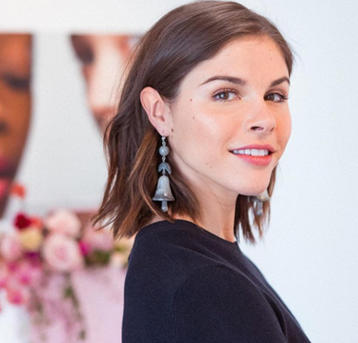Buy or be bought - beauty acquisition trend to intensify in 2017, Australia's annual online spend hits $43.1 billion - beauty among top 10 categories, Anti-pollution trend to continue, and Boutique beauty stores on a global roll.
Buy or be bought - beauty acquisition trend to intensify in 2017
Over the past five years the number of buyouts in the beauty industry has soared, says A.T Kearney, the global management consulting firm. The top three reasons for the frenetic activity are: the need to appeal to a wider variety of consumers (younger and multicultural customers), expansion into more distribution channels and the acquisition of new technologies.
But the over-arching cause of the flurry of acquisitions is consolidation. Each major sector of the global cosmetics and personal business is dominated by only a handful of companies. The core brands of the leading multinationals are mature in many markets, so they have to buy startups, niche brands and indies in faster-growing sectors such as men's grooming to achieve on-going growth. That's the main tipping point accelerating the now-entrenched trend. Looking to sell a brand? You will have more of a chance in skincare, fragrance and mass beauty, says A.T. Kearney, which are the least consolidated sectors of the global beauty bizz.
The stats speak for themselves. Only three companies account for 45 per cent of the global beauty market. The names may change in each category, but the top trio operating in the space control the bulk of sales. In prestige, the dominant threesome have a market share of 49 per cent, in contrast to 39 per cent in the mass market. The deodorant market is even more skewed, with the top three companies accounting for 75 per cent of the worldwide market.
Haircare is the next most polarised market where the top three have a 62 per cent global market share. Colour cosmetics rank as the number three most consolidated sector with the three majors controlling a 51 per cent market share, followed by bath and shower where the leading trio of multinationals account for 46 per cent of sales.
The skincare market is more fragmented, with the big three operators responsible for a smaller 27 per cent market share. Fine fragrance is also much less - ahem - concentrated with the leading trio of companies"owning"a 38 per cent share of the global market.
Australia's annual online spend hits $43.1 billion - beauty among top 10 categories
There's been a resurgence in the number of Aussies heading for the shops - an increase of 19 million trips over the past year to 1.43 billion bricks-and-mortar visits. That doesn't mean that online shopping is on the slide, says Roy Morgan Research. In an average four weeks, 43 per cent of the population buys at least one item online. In the 2015/2016 financial year, Australia's total online spend rose 9.7 per cent to $41.3 billion.
Travel ($16.4 billion) and entertainment and leisure ( $5.4 billion) are the two largest e-commerce spending categories. But close to half the expenditure - $20 billion - goes on buying retail products from food through fashion, beauty and reading material.
In descending order from the big two, Australians spent billions in the eight categories comprising the remainder of the top 10, says Roy Morgan. The number three slot goes to clothes and shoes ($4.1 billion) followed by electronics ($3.7 billion), food and beverages ($3.3 billion), health and beauty ($1.7 billion), home and garden ($1.5 billion), reading material ($1.5 billion), car parts and accessories ($889 million) and jewellery, watches and accessories ($710 million).
Many Australian retailers have been pursuing an omnichannel approach and it's paying off, says Michele Levine, CEO, Roy Morgan Research. "Just over a third of Australia's Internet spending goes to the online channel of "traditional" retailers, as opposed to online-only stores. Considering that traditional retailers share of the online market was close to zero in 2010, this shows the progress they've made".
Anti-pollution trend to continue
No prizes for guessing that Asia, notably China, is the world's leading market for anti-pollution skincare. Yet in spite of this year's torrent of anti-pollution launches, there's still plenty of opportunity for sales to soar says Mintel. According to the researcher, only one per cent of global beauty releases make anti-pollution claims.
But brands will have to lift their game, says Mintel. In Western markets, fewer than 20 per cent of consumers are convinced that anti-pollution skincare is effective. It's also time that the subject moved front and centre in packaging, notes the researcher, instead of relying solely on marketing, advertising and media reach to spread the message.
To date, most of the products pushing the anti-pollution barrow have been cleansers and moisturisers, reports Mintel. For the category to achieve its maximum potential, anti-pollution claims should expand to haircare and colour cosmetics led by foundations and BB creams.
Boutique beauty stores on a global roll
Digital, open sell shopping environments and online sales can only do so much for beauty brands. To boost their omnichannel strategies, more and more brands are opening beauty boutiques worldwide to create more touchpoints, leverage sales and build customer loyalty. According to Kline & Co, the three fastest-growing brand boutique chains in the US are Nature Republic, NYX Cosmetics and Rituals. In the UK, the top honours go to Sakare (a prestige natural skincare brand), Cowshed and Australian favourite Aesop.
"It's almost like a cult, the followers are often buying into the exciting concept of these stores more than the products themselves", says Kline & Co analyst Kelly Alexandre. "The success of such stores depends on whether brands can keep up with the pace of younger consumers digital needs, as well as keep a store's levels of innovation and enjoyment high".
Brands at all levels of the market from M.A.C to Kryolan (now with four stores in Australia) are pushing the direct-to-customer strategy. Estee Lauder, for example, has opened the Estee Edit shop in London and the first L'Oreal Paris concept store debuted in the French capital recently. NYX, owned by L'Oreal, has opened 20 new stores this year. E.l.f Cosmetics has just opened its first boutique in New York. While French skincare brand Caudalie will add a second store in Miami to its global count of 26 concept shops, adding three more stores in Shanghai and two more in LA in the first few months of 2017.
Snippets from the wires
- Grocery will continue to be a profitable venue for beauty. According to Roy Morgan, Australians still prefer to go to supermarkets in person. Only 3 per cent of Aussie grocery buyers do their weekly shop online.
- The beauty industry is really pushing the envelope these days when it comes to the diversity of brand ambassadors. CoverGirl recently appointed the first Muslim and male faces for the brand. Pantene has just appointed mixed martial arts powerhouse, Ronda Rousey, to spruik its haircare prowess.
- US beauty retailer Ulta continues to go from strength to strength. Sales increased 24.2 per cent in Q3 to $US1.31 billion and the chain opened 42 more stores across the US.
- Make Up For Ever, owned by Louis Vuitton, has signed Jesse J as the face of its Artist Lip and Face Collection for 2017. The popular pro brand celebrated 20 years as a stalwart at Sephora this year.




